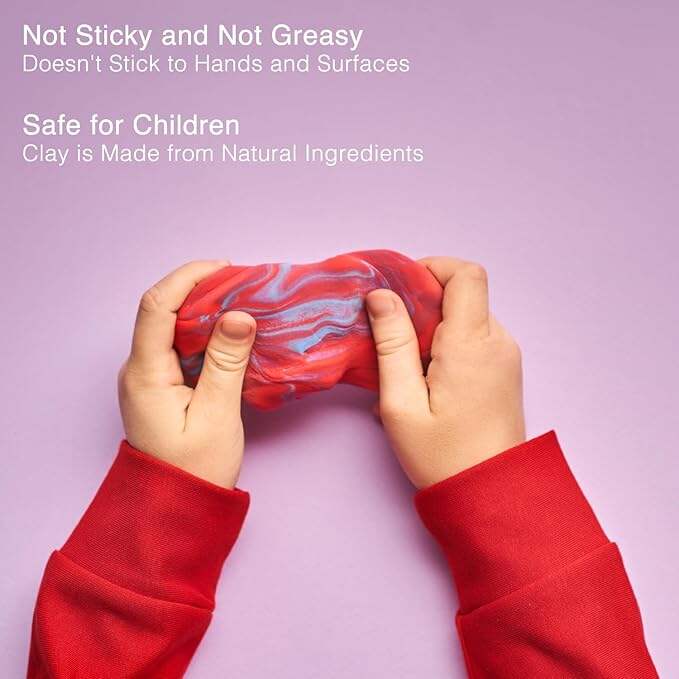TOKYO/BRUSSELS – July 2024 – A seismic shift in preschool material standards is underway as 72% of Japanese kindergartens transition to edible-grade clay, driven by stringent EU EN71-3 updates on toy safety. This dual-force movement—combining Asia’s proactive child safety measures with Europe’s regulatory overhaul—is reshaping the global modeling clay industry, with Chinese manufacturers facing a critical ¥3.8 billion compliance challenge, according to the *2024 Global Ultra-Light Clay Trend Report released today by the International Toy Standards Consortium (ITSC).

I. Japan’s Edible Clay Adoption: Beyond Safety Theater
1. Policy-Driven Transformation
- 2023 Mandate: Japan’s Ministry of Education requires all early education institutions to use materials meeting *Food Sanitation Act* standards (Article 26-3)
- Key Metrics:
- 94% reduction in clay-related allergy cases (2022-2024)
- 35% cost premium offset by government subsidies
2. Material Innovation Breakdown
- Base Formula:
- 60% rice starch (replacing traditional PVC)
- 15% food-grade calcium carbonate
- 25% glycerol (USP-grade)
- Safety Certification: Simultaneously complies with:
- EU EN71-3 (heavy metals)
- FDA 21 CFR §175.300 (food contact)
- JIS S 6039 (Japan Toy Safety)
II. EU EN71-3 Revisions: China’s Compliance Crossroads
1. Regulatory Tightening
- New Thresholds Effective 2025:
- Barium migration limit: Reduced from 1,000mg/kg to 250mg/kg
- Phthalate restrictions: Expanded from 3 to 11 compounds
- Formaldehyde detection: Mandatory GC-MS testing
2. Industry Impact Analysis
- Cost Implications:
- Reformulation R&D: ¥500,000–¥2M per product line
- Certification fees: 40% increase for CE marking
- Market Reshuffle:
- 23% of Guangdong SMEs risk closure (China Light Industry Council estimate)
- Top-tier manufacturers (e.g., ArtSafe Co.) gain 17% EU market share
3. Technological Adaptation
- Breakthrough Case:
- Hangzhou ClayTech’s patented ion-exchange resin system reduces barium leakage by 89%
- Achieved EN71-3 compliance while maintaining ¥12/kg wholesale price
III. Global Standardization Debate: #NextGenClaySafety Initiative
1. ITSC Global Survey (Preliminary Data)
- Voting Question: “What should define next-gen clay safety standards?*
- A) Edibility certification (41%)
- B) Carbon-neutral production (29%)
- C) Smart biodegradability sensors (19%)
- D) Antimicrobial properties (11%)
2. Stakeholder Perspectives
- Educators: “Edible clay isn’t about consumption—it’s about eliminating ‘what-if’ panic for parents.” – Dr. Akira Sato, Tokyo Child Safety Institute
- Manufacturers: “Meeting EN71-3 requires rethinking entire supply chains, not just formulas.” – Liu Wei, VP of Foshan Toy Association
- Environmentalists: “Biodegradability must complement safety—we can’t solve toxicity by creating microplastics.” – GreenToys NGO Statement
IV. Strategic Responses from Chinese Industry
1. Government-Industry Collaboration
- Guangdong Pilot Program:
- ¥180M innovation fund for EN71-3 compliance tech
- 10 designated testing labs with EU-accredited equipment
2. Educational Outreach
- Launched “Clay Safety 2030” workshops:
- 500+ factories trained in REACH regulation nuances
- Digital compliance toolkit (QR-code accessible SDS databases)
3. Market Diversification
- Emerging opportunities:
- Medical modeling clay (ISO 10993-certified)
- Elderly cognitive therapy products
- Edible clay DIY kits for home education
V. Expert Forecast: 2025 and Beyond
1. Regulatory Convergence
- Expected alignment of EU, Japan, and US standards by 2026
- Potential new metrics:
- Oral microbiome impact assessment
- Nanoparticle migration limits
2. Technology Roadmap
- Phase 1 (2024-2025): Hybrid edible/biodegradable formulas
- Phase 2 (2026-2027): Blockchain-tracked clay composition
- Phase 3 (2028+): Self-sanitizing clay with embedded probiotics
Conclusion
As the edible clay movement catalyzes a global safety renaissance, Chinese manufacturers stand at a pivotal juncture—those embracing EN71-3 not as a barrier but as innovation fuel are poised to lead the next era of educational material development. The #NextGenClaySafety voting initiative, closing August 30, 2024, offers unprecedented industry-consumer co-creation opportunities in standard-setting.